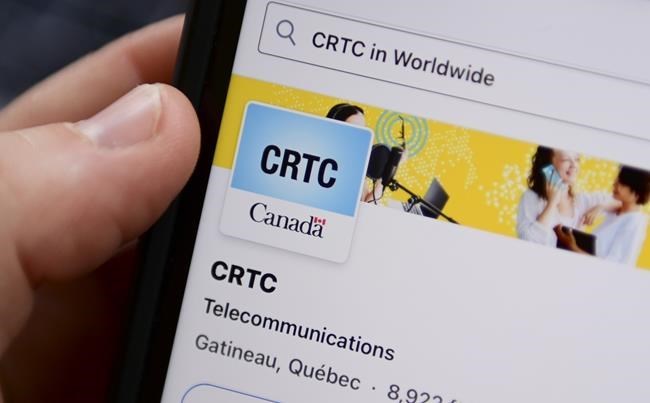The federal telecommunications regulator is sticking with the way it sets prices for smaller companies that buy access to large carriers' internet networks.
Following a review, the Canadian Radio-television and Telecommunications Commission says that the best way to promote competition is the current approach in which it sets rates for wholesalers, such as TekSavvy, based on the service and infrastructure costs to the major players, plus a markup.
Most of sa国际传媒's larger carriers had argued for reforms, saying the traditional wholesale rate-setting method has resulted in competitors paying them less than the break-even cost.
They instead wanted to bring in commercial negotiations as the method for setting the majority of wholesale service rates, saying that model would provide greater opportunity to meet competitor-specific needs while minimizing unnecessary regulation.
The CRTC described its current approach as "forward-looking, which results in rates that reflect expected market conditions, including the technology used, over a period of time."
"Once final rates are set, generally for a five-year period, they typically remain constant, barring any changes in the market," it said in its decision published Friday.
"This provides regulatory certainty for all parties when planning their respective strategies."
But the CRTC said it will work to improve its current approach, with adjustments such as considering market rates and other relevant information. To do so, it directed carriers to provide market-level information when submitting rate-setting applications for any new or existing services.
The regulator added it will also remain open to using other approaches on a case-by-case basis, when it determines a particular situation requires a different model to ensure "just and reasonable rates." It noted smaller providers and those providing services for which demand is very limited should be given more flexibility to use the approved rates of other service providers.
The Competitive Network Operators of sa国际传媒, which represents independent internet providers, applauded the CRTC's decision, saying it was optimistic that the guidance would lead to reduced wholesale rates.
"It's exactly in line with what we were hoping," said executive director Geoff White, adding that the negotiation model proposed by larger carriers "would have been totally fatal to the competitive industry, which is already on the ropes."
"Smaller players have no bargaining power," he said. "They have no negotiating power against the big players."
The Canadian Telecommunications Association, which represents organizations that invest in, build, maintain and operate telecom services, said it is reviewing the decision and declined to comment further.
In March, the CRTC announced it was lowering some wholesale internet rates by 10 per cent as it launched a separate review into the rates that smaller competitors pay the major telecom companies for access to their networks.
That review, which is ongoing, is aimed at bolstering competition and lowering consumer costs. It will also determine whether big carriers should provide smaller competitors with access to their fibre-to-the-home networks to improve internet speeds to their customers.
Industry Minister Fran莽ois-Philippe Champagne directed the regulator in February to implement new rules to enhance consumer rights, affordability, competition and universal access, which included a requirement for improved wholesale internet rates.
This report by The Canadian Press was first published July 7, 2023.
Sammy Hudes, The Canadian Press
Note to readers: This is a corrected story. A previous version named Distributel and Vmedia as examples of the sort of independent providers represented by the Competitive Network Operators of sa国际传媒. In fact, neither company is currently operated independently.



